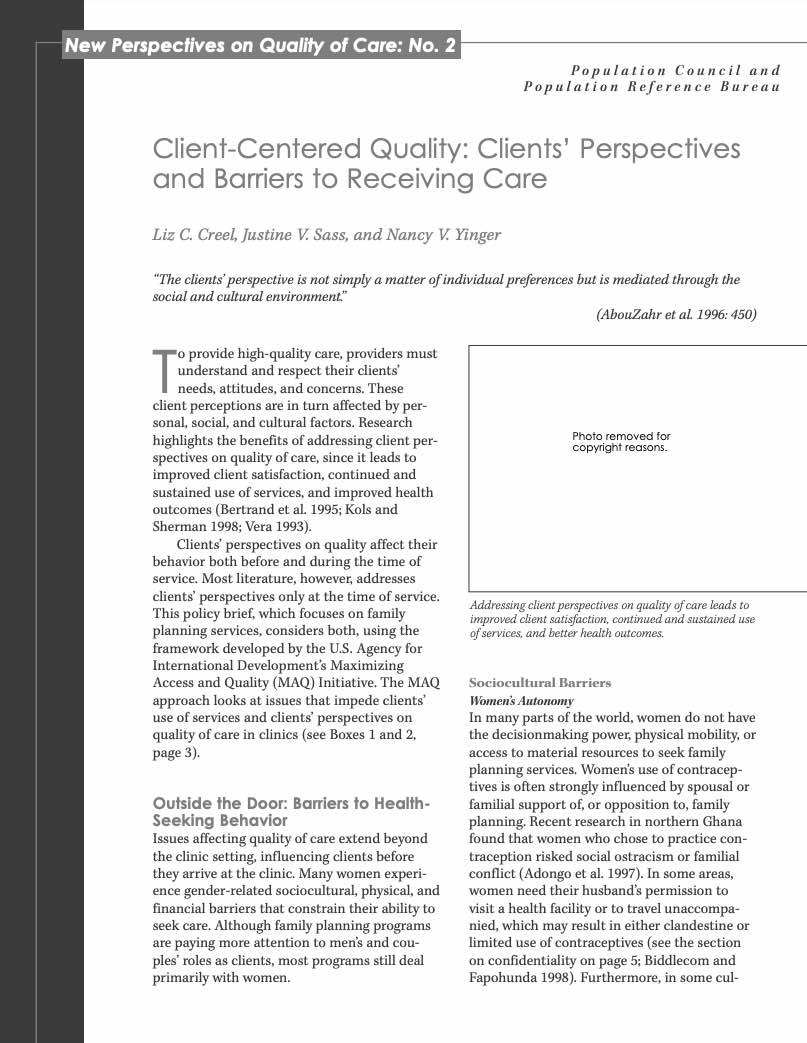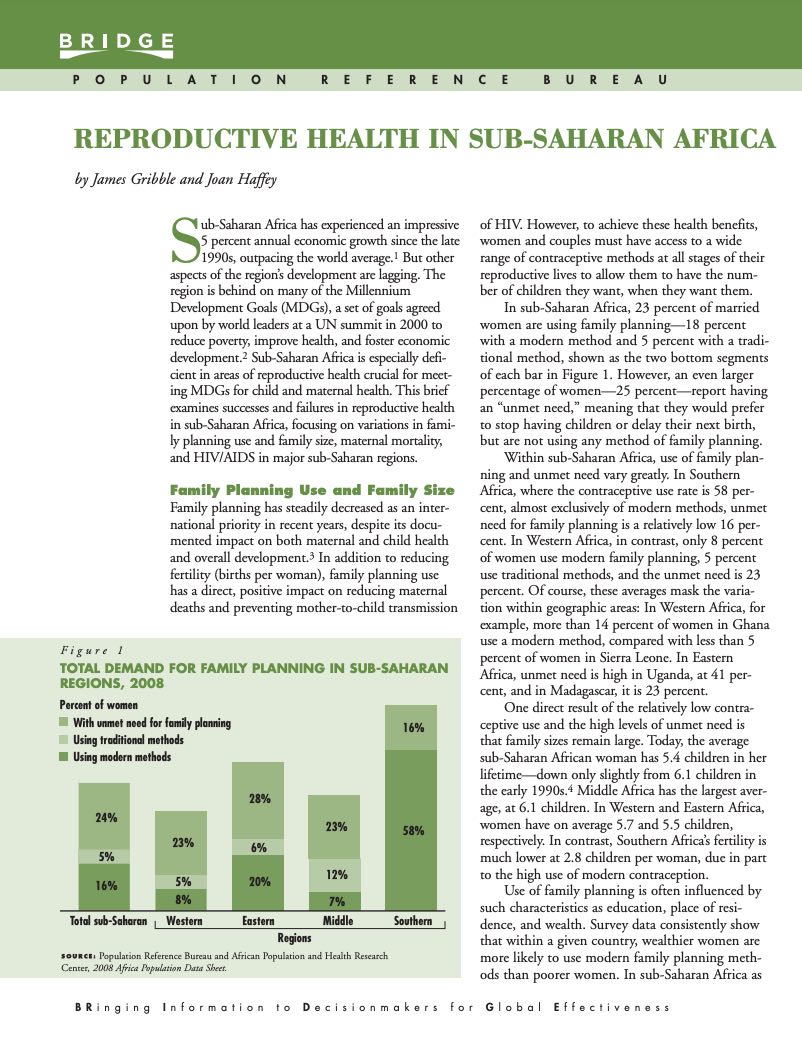The Generational Divide in the U.S.
(2014) Countries around the world are paying more attention to inequality as an indicator of social and economic well-being.

(2014) Countries around the world are paying more attention to inequality as an indicator of social and economic well-being.

To provide high-quality care, providers must understand and respect their clients' needs, attitudes, and concerns. These client perceptions are in turn affected by personal, social, and cultural factors.
(2008) Opposition to Kenya's recent election resulted in days of deadly riots. Kenya's demographic trends provide some background to the current situation, revealing both advances and continuing challenges.
(2002) The past century witnessed a revolution in health care, yet millions of women still endure the risks of pregnancy and childbirth under conditions virtually unchanged over time. Maternal complications take a serious toll on women.

Project: BRIDGE: Bringing Information to Decisionmakers for Global Effectiveness
(2008) Sub-Saharan Africa has experienced an impressive 5 percent annual economic growth since the late 1990s, outpacing the world average.
(2001) Title VII of the Civil Rights Act of 1964 sought to reduce racial inequality by eliminating discrimination in the labor market.
(2010) Family planning empowers women and can save their lives. It can also help reduce poverty, slow population growth, and ease pressures on the environment.

What information does a census collect? The answer depends on when and where in time the census was taken.